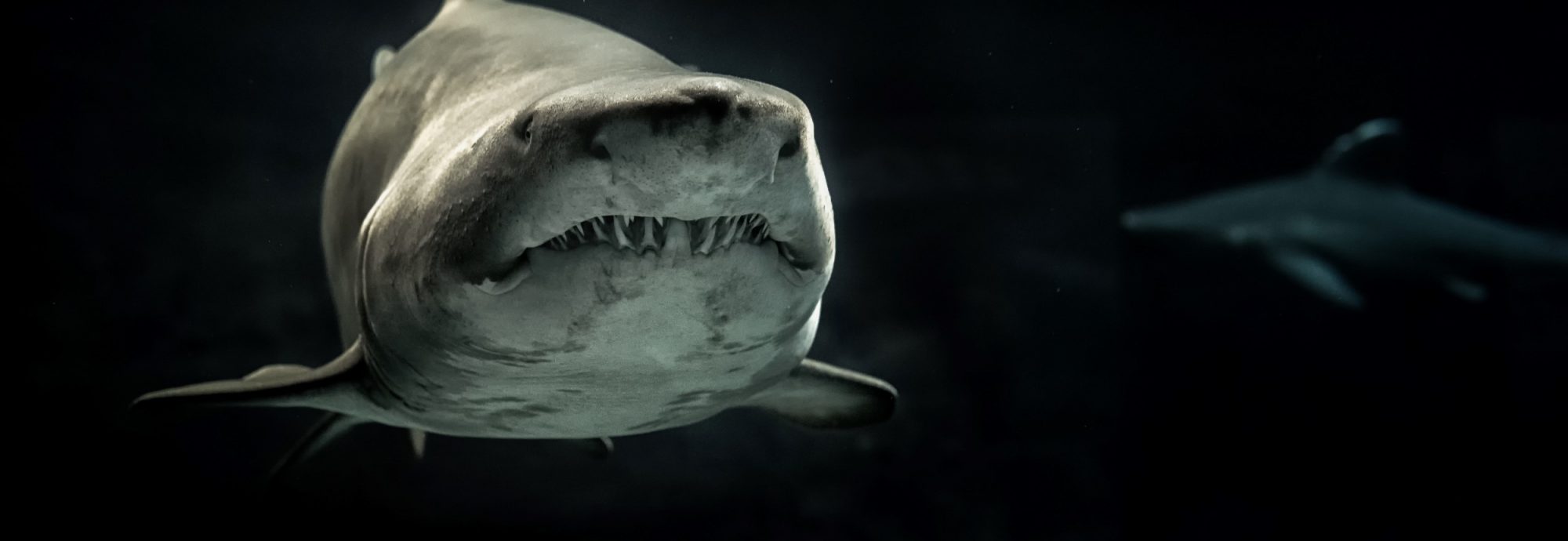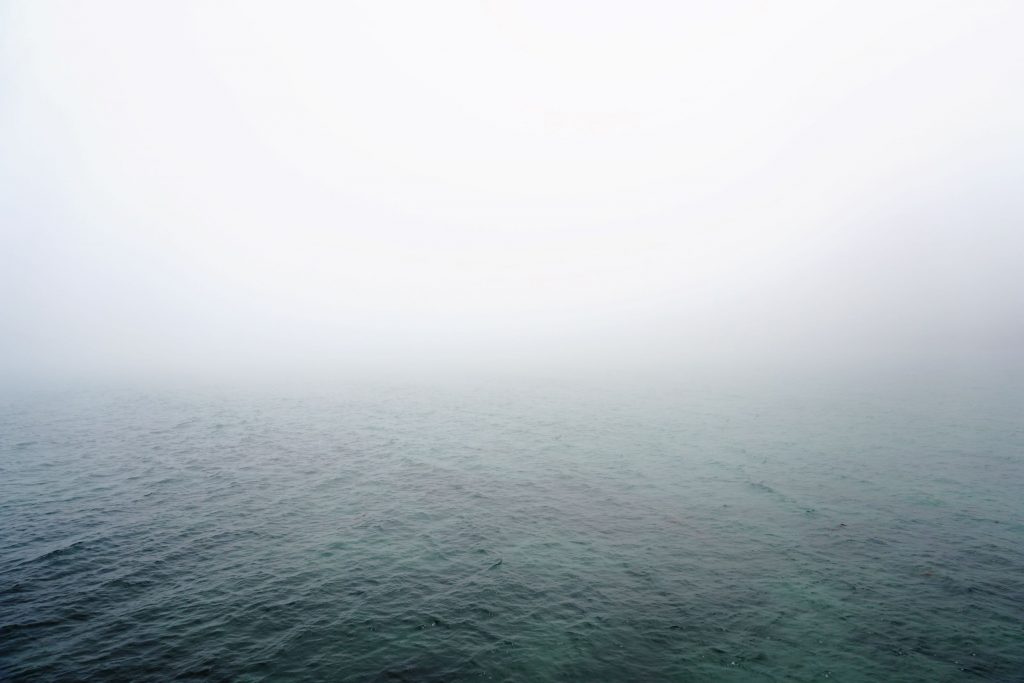

It’s little wonder that the ocean provides such ample inspiration for the film industry. Despite it dominating Earth’s geography, we as humans have only mapped 25% of the global seabed and have physically explored even less. The possibility of what might exist in that remaining 75% allows the imagination to run riot.
With that in mind, and with autumn upon us and Halloween on the horizon, here are 10 thrilling maritime-related films from across the decades to keep you on your toes this spooky season.
The Beast from 20,000 Fathoms takes inspiration from the ushering in of the ‘atomic age’. Based on a 1951 short story titled ‘The Fog Horn’, the film is about a huge dinosaur-like creature called the Rhedosaurus that had been encased in ice for millions of years in the Arctic before being unintentionally freed by a nuclear bomb test. The creature lurches its way south towards New York City, where the main characters scramble to come up with a way to defeat it. The film is said to have been the inspiration for Godzilla, which was released the following year in 1954.
20,000 Leagues Under the Sea is an adaptation of the 1870 Jules Verne book of the same name. It follows three men as they investigate rumours of ships being attacked by a sea monster in the Pacific. It is eventually realised that the sea monster is in fact a futuristic submarine called the Nautilus, captained by the mysterious Captain Nemo. Notable for having been produced by Walt Disney, it won two Academy Awards, including one for special effects. Indeed, many remember the film for an action sequence depicting a fight with a giant squid.
The Poseidon Adventure is also a book adaptation and was released during the ‘golden age’ of the disaster film in the 1970s. Featuring no fewer than five Oscar winners, it is about a luxury ocean liner called the SS Poseidon that is overturned by a tsunami while on its final voyage across the Atlantic before being scrapped. With the ship now upside-down and with a group of passengers trapped at the bottom, a preacher played by Gene Hackman steps up to the plate and tries to lead them to safety. The film was nominated for eight Academy Awards, two of which it won.
Modern Hollywood owes a lot to Steven Spielberg’s Jaws. With its far-reaching distribution and its extensive marketing strategy, Jaws was the first ever summer blockbuster. Based on a book of the same name by Peter Benchley, it takes place in the resort town of Amity Island. Beachgoers are being terrorised by a great white shark, and so the local police chief ropes in a marine biologist and a professional shark hunter to try and track down the beast. Three mechanical models were made to film scenes with the shark in, which required 14 people to operate. The construction of these models was led by the same man who made the aforementioned giant squid from 20,000 Leagues Under the Sea!
With a budget of just $1.1 million, The Fog centres around the Californian town of Antonio Bay. In the 1880s, the townspeople had tricked a ship into being wrecked on the rocks, and then pillaged it for its cargo of gold. 100 years later, the ghostly crew of the ship descend upon the town to seek revenge. Although it received mixed reviews at the time of its release, The Fog has since become something of a cult classic.

The Abyss follows a team of US Navy SEALs and the crew of an underwater drilling platform as they race to beat the Soviets and recover an American nuclear submarine that has sunk by a mysterious unknown entity in the Caribbean. The film was written and directed by James Cameron, who is the first person to have made a solo voyage to the bottom of the Challenger Deep in the Mariana Trench, the deepest known part of the ocean.
Survive the Savage Sea is based on the 1973 book of the same name by Dougal Robertson, which in turn is based on the real-life ordeal that Robertson and his family went through in 1972. While sailing off the coast of the Galapagos Islands in the Pacific, a pod of orcas attacked and sank the family’s schooner. They were forced to escape into their life raft and a dinghy called the Ednamair (which is on display in the Museum). With only enough water for ten days and enough food for three days, the Robertsons had to fight for their survival.
Open Water centres around two scuba divers who are accidentally left behind in shark-infested waters after the crew of their tour boat conduct a headcount incorrectly and head for shore without them. It is based on the true story of Tom and Eileen Lonergan, who were left behind on the Great Barrier Reef in 1998. Unlike Jaws, Open Water was filmed with real sharks, and despite being made with a budget of less than one million dollars it managed to gross over $55 million at the box office.
The sixth and final book adaptation on this list, The Meg draws loosely from Steve Alten’s 1997 novel Meg: A Novel of Deep Terror. It follows a deep-sea diver as he attempts to rescue the crew of a submersible who have been attacked by a giant creature while studying the Mariana Trench. The creature turns out to be the eponymous meg – a 75-foot megalodon shark long thought to be extinct. The lead character is played by Jason Statham, who completed for England in the 1990 Commonwealth Games as a diver. As such, Statham was able to perform many of his own stunts while in the water.
Last but not least, The Lighthouse takes place in the 1890s and centres around the descent into insanity of two lighthouse keepers marooned in their remote outpost by a fierce storm. It features a scene where one of the characters is warned to not kill a one-eyed seagull that has been bothering him, because of a superstition that says that certain seabirds are the reincarnated souls of dead sailors. If you fancy reading more about the origins of that particular belief, then you can check out our guide to some of the most prominent maritime superstitions.

National Maritime
Museum Cornwall Trust
Discovery Quay
Falmouth Cornwall
TR11 3QY
View Map
See our opening hours
Tel: +44(0)1326 313388
Email: enquiries@nmmc.co.uk